Switch to the dark mode that's kinder on your eyes at night time.
Switch to the light mode that's kinder on your eyes at day time.
ERTC (Employee Retention Tax Credit) Program- Calculation & Application
Table of Contents
ToggleERTC (Employee Retention Tax Credit) Program- Check If Your Qualify, Calculate Your Refund & Apply
ERTC (Employee Retention Tax Credit) Program: Most Business ad Eligible for the ERTC Tax Credit Paid By Check,
Due to the Mandates During the Last 2 Years, Even If They Got the PPP.
Check If You Qualify, Calculate Your Credit & Apply.
ERTC (Employee Retention Tax Credit) Program Calculation & Application: Most Businesses are Eligible for the ERTC Tax Credit, Even If They Got the PPP.Check If You Qualify, Calculate Your Refund & Apply
Most US based businesses do know that they are qualified for Fovernment Funding-Financing due to the restriction of the pandemic during the last 2 years.
Check whether you are qualified for $10.000-26.000/Employee.
Most US based businesses that have more than 2 W2 employees can apply for the ERTC ( Employee Retention Tax Credit) Program, which must not be confused with the PPP- it is a different one and till 2021 businessses had to choose to apply for the one or the other, but from 2021 till 2024 this program will be active & can easily be financed with $10.000-26000/ employee, paid by checks.
What is The ERTC - Employee Retention Tax Credit Program
ERTC stands for Employee retention Tax Credit.
This was introduced in the CARES act on March 25th in 2020 . A business owner can get up to $26,000 per W2 employee in a tax credit paid by check
from the I. R. S. For each W2 employee that they have during the year of 2020 and 2021.
There must be two or more W2 employees, not including the business owner or an immediate family member as well.
So the minimum is two and the maximum is 500 W2 employees per entity.
The ERTC program is available to for profit and non profit businesses as well.
The key is if a business owner pays payroll tax and they were affected by covid and have at least two full time W2 employees that is not a business owner or an immediate family member. Then, they should be able to qualify for the employee retention tax credit.
So this is a very generous tax credit when it came out in March 25 of 2020.
The reason why hardly anyone knows about this tax credit is that it came out in the CARES ACT also with the payroll protection plan or the P. P. P ( Payroll Protection Plan) that everyone has heard about and knows about. So this was overshadowed by the P. P. P.
Because at the time business owners had to choose between the P. P. P. Or the E. R. T. C.
But all of the lenders out there, the banks all over the place.
Big tech companies um with Fintech, they were all pushing the P. P. P ( Payroll Protection Plan). because it was a little bit easier to apply for and to get.
Yeah you can only pick between one or the other, but that changed the next year in March of 2021 where you could actually get both the P. P. P.
and the E. R. T. C. Very few people know about this.
Very few know about the E. R. T. C. Just because of the payroll protection plan that overshadowed this program and so hardly anybody has been filing for it.
There are a few tax firms out there and a few different services that are advertising this that know about it that are sending out information.
Our partners are experts and have filed for hundreds of business owners for the tax credit program and aggressive as well.
We can do everything that can been legally done, to help the business owner get as much as they can for the tax credit.
Which in us being able to get as much as a business owner can legitimately get in the tax credit.
https://irs.gov has information there.
That is also an enrolled agent that has a line into the I. R. S. to be able to get the updated information needed to also know about all the different details and scenarios for business owners on what they can qualify for in each situationand how this works.
How the tax credit is calculated΄?
Businesses can get up to $7000 tax credit per quarter of 2021 for Q1 Q2 or Q3.
Q4 was not included. That was decided near the end of 2021 if the fourth quarter should be included in the tax credit or not.
That would have been up to $33,000 per W2 employee but they decided to cancel that butStill it’s a very generous tax credits a lot of billions sitting on the table available for business right now.
A lot of people that think they don’t qualify still actually do.
Most people think they don’t qualify for a couple of different reasons and I’ll let me go into a different slide here.
There are misconceptions about the tax credit-E. R. T. C:.
Business owners think they can’t qualify if they did better during Covid, which is not true.
If they were affected by Covid mandates are affected by different aspects of covid happening then there’s a good chance that they’ll qualify if they did not shut down.
They don’t think they’ll qualify, which is not true if they received P. P. P.
loans that now you can get both or they think that E.R.T. C. is over. So there were some news articles and some some tv announcements that the tax credit ended last year which it did end as far as how much you can qualify for.
But now business owners have up to three years to be able to amend their 9:41s their payroll taxes to be able to qualify for the tax credit.
So up to 3 years after the the tax credit from when they need to file their 9:41s.
This is a very very generous tax credit for businesses and it is a pity that very few people know about.
How much money businesses can be qualified for with the ERTC:
During the year of 2020 W2 employees can get up to $5000 / employee.
That is for the whole year of 2020, So $5,000 for the year of 2020 and then $7,000 across three
quarters of 2021 ,equals $26,000, so it is up to $26,000.
There are a few things stipulations about it with 2020, it’s harder to qualify for.
There needs to be a significant reduction in revenues for that company from 2020 compared to 2019.
In the corresponding quarters, there usually needs to to be a 50% drop in revenues in 2020 compared to 2019.
It’s easier for 2021-20% drop in revenue in 2021 with the corresponding quarter in 2019. BBut there’s also the opportunity for taking advantage of being affected by COVID mandates.
For example, there’s a restaurant in San Francisco, they had to close down the inside of their restaurant, but they pivoted quickly. They opened up outdoor seating and actually grew by 40% in revenues.
Now, just from the 20% rule of making less revenue in 2021 compared to 2019, they wouldn’t have qualified, but because they were affected by COVID mandates and had to shut down the inside of the restaurant they could have earned so much more money because of that and they still qualified for the tax credit because of those mandates that affected their business.
We’re talking to a lot of companies that maybe didn’t hit the 20% reduction, but through other things our tax firm helped them to qualify for the tax credit.
So most businesses have been qualifying.
We are being aggressive helping business owners to get their tax credit.W
Why People Confuse the PPP (Payroll Protection Plan ) With ERTC & Why You Can Still Apply
The ERTC came out in the CARES ACT also with the payroll protection plan or the P. P. P ( Payroll Protection Plan) that everyone has heard about and knows about. So this was overshadowed by the P. P. P.
Because at the time business owners had to choose between the P. P. P. Or the E. R. T. C.
But all of the lenders out there, the banks all over the place.
Big tech companies um with Fintech, they were all pushing the P. P. P ( Payroll Protection Plan). because it was a little bit easier to apply for and to get.
You can only pick between one or the other, but that changed the next year in March of 2021 where you could actually get both the P. P. P.
and the E. R. T. C. Very few people know about this.
Very few know about the E. R. T. C. Just because of the payroll protection plan that overshadowed this program and so hardly anybody has been filing for it.
There are a few tax firms out there and a few different services that are advertising this that know about it that are sending out information.
Businesses think they wil not qualify if they had received P. P. P. loans that now you can get both or they think that E.R.T. C. is over.
So there were some news articles and some some tv announcements that the tax credit ended last year which it did end as far as how much you can qualify for.
But now business owners have up to three years to be able to amend their 9:41s their payroll taxes to be able to qualify for the tax credit.
So up to 3 years after the the tax credit from when they need to file their 9:41s.
This is a very very generous tax credit for businesses and it is a pity that very few people know about.
Our partners are experts and have filed for hundreds of business owners for the tax credit program and aggressive as well.
Which Kind Of Businesses Can Qualify for the ERTC
Requirements- Prerequisites for US Businesses to Get Funded With ERTC
Are you eligible for ERC?
Many businesses are.
Can Be Qualified Businesses :
- That have 2 or more W2 Employees, not including the business owner or a close relative employee
- That have up to 500 W2 employees
- Of all types- industries profit and non profit
- Can even Qualify For Even if You did better during Covid
- Affected by Covid mandates by different aspects even if they did not shut down
- That have been appproved and got the PPP as well
- That had a 50% drop in revenues in 2020 compared to 2019.
- That had 20% drop in revenue in 2021 with the corresponding quarter in 2019
- That they might not experienced revenue drops but they have the opportunity for taking advantage of being affected by COVID mandates
How Much Funding- Financing Money Can You Get with the ERTC
For 2021, eligible businesses can receive up to $7,000 per employee, per quarter. Yes, each employee might earn up to $26,000 in a single year. Businesses that qualify can receive up to $5,000 per employee in 2020.
- $5.000 for 2020
- $7.000 for the first 3 first Quarters of 2021
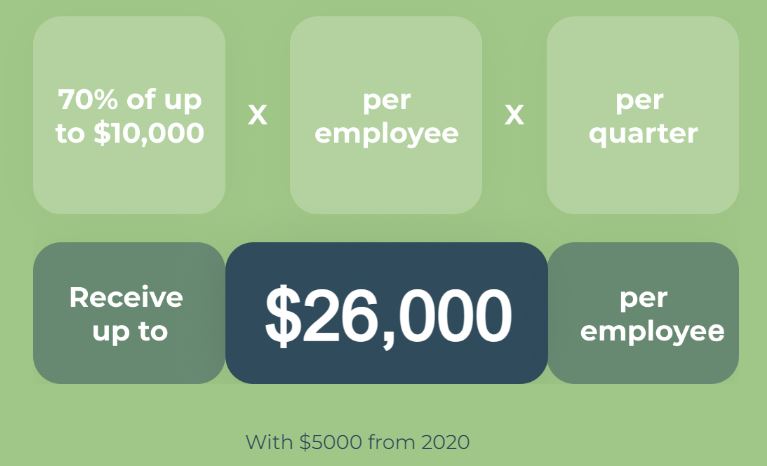
How do you Know If Your Business is Eligible to Receive Money From the ERTC
Your firm has to have been impacted in one of two ways to be eligible for the ERTC.
a decrease in revenue over a reported quarter. To be eligible for the credit, a drop of at least 50% over any declared quarter in 2020 must be demonstrated; however, the credit is only worth $5,000 per year. The credit was increased in 2021 to cover companies with sales declines of just 20%. Businesses may be eligible for up to $7,000 in credits per employee for each individual quarter in 2021.
Your firm may close “Completely or Partially.” Local government mandates and restrictions have been implemented all around the United States, including social exclusion, being forced to work from home, and even complete firm shutdown.
If you satisfy either of the following two conditions, you may be eligible:
1. The gross receipts of your business decreased.
2. Your company has to cut back on operations due to a directive issued by the government.
Lightning Fast Results
So that you can resume business as usual, we respond and file as soon as we can.
Industry Leading Team
Attorneys, CPAs, and finance sector expertise make up our team.
Competitively Priced
Our cost for acquiring your money is reasonably priced and is determined by the end result.
Expertise, Experience & Efficiency
We are aggressive at claiming the ERTC (employee retention tax credit) - refundable tax credit. Hiring unexperienced accountants of consultants might result in delays, mistakes & loss of maximum financning. Let our expertise guarantee the best results at the lowest time possible. Our partners are experts and have filed for hundreds of business owners for the tax credit program and aggressive as well.
Dedicated Representative
Our cost for acquiring your money is reasonably priced and is determined by the end result.
Free Initial Consultation
The assessment, funding calculation & initial consultation is %100 free
Maximum Funding
We make sure that not only will get funded but for the maximum amount of money that you qualify for as well
Which is the Process To Follow in Order to Apply for the ERTC (Employee Retention Tax Credit)
Apply for the ERTC Program in 3 Simple Steps:
Fundwise's process to maximize your ERTC funding.
Fill In The Form
Simply Fill in the form with your contact details. Get a no risk, no obligation filling estimate through our simple online platform
We calculate your ERC
Our efficient and experienced team will determine your maximum credit amount.
We file for you
Our experts complete your IRS filing for you, quickly and accurately to get your funding ASAP.
Step #4:
You get your funds
Get your funding from the IRS directly, with minimal involvement needed from yourself.

How Can You Claim The Employee Retention Credit ?
Businesses should file Form 941-X, Modified Employer’s Quarterly Federal Tax Returns or Request for Refund, for the pertinent quarter(s) that the eligible earnings are received in order to get the credit for the prior quarter. The IRS provides three examples to illustrate the process.
Seven options are given by the IRS notice 2021-20 for how a PPP financed company determines which earnings, if any, are eligible for the tax credit. The manner in which qualifying wages were disclosed on the PPP debt forgiveness application largely determines the total eligible salaries.
Qualified earnings included in anticipated salary costs and the employment tax deposit on the repentance request are used only in exceptional cases when more expenses than necessary were used to justify the debt forgiveness. In certain circumstances, the IRS will utilize the poverty wages cost and other permissible costs of a full-time employee to support debt forgiveness.
Contrarily, the IRS makes it clear that charges eligible for PPP cancellation that were not included in the initial debt forgiveness request may be added afterwards. In order to maximize the acceptable profits accessible to ERTC, it is crucial to include all qualifying charges on PPP debt forgiveness requests, especially non-payroll costs such utility services, partial suspension, and operational expenses, to name a few.
For each calendar quarter, qualified employers must report their entire eligible earnings on Form 941, Company’s Quarterly Federal Tax Return, which is used for federal hiring tax reports.
Additionally, employers are required to list on Form 941 any qualifying family leave or sick leave compensation for which they are entitled to an FFCRA credit. In order to qualify for the Employee Retention Credit, qualified employers may fund eligible salaries in advance by:
- Accessing federal employment taxes, such as payroll period withholding taxes that need to be deposited with the IRS
– You can get a jump on your taxes by completing Form 7200, Advance Credit Payments of Employee Credits. For the percentage of the credit that cannot be supported by federal hiring tax payments, you can collect a tiny portion of the credit from the IRS under COVID-19.
You must report your qualified profits and related credits for each calendar quarter in which you qualify on Form 941-X, Adjusted Company’s Quarterly Federal Tax Return and Claim for Refunds.
Your yearly pay again for the tax year would be reduced on your tax return if you applied for the benefit and submitted a claim. For such a 2020 tax year, you could need to file updated tax returns. You should submit an application for the credit after you finish your 2021 income tax returns.
What Is The Deadline For Filling The Employee Retention Tax Credit (ERTC)?
The Employee Retention Tax Credit (ERTC) is available to businesses retroactively. When the calendar quarter finishes on April 15 of the year after the current one, the three-year statute for payroll taxes starts to run. Thus, you would have until April 15, 2024 for ERTC claims from 2020 and April 15, 2025 for ERTC claims from 2021.
Is the ERTC Taxable & Do You Have To Pay Back the Money?
The for employee retention because is completely refundable. The ERTC is a long-term reimbursement that you may keep.
The tax credit that employers receive for qualifying wages, including their allocable qualified health plan expenses, is not required to be included in the employers’ gross income under federal income tax legislation.
90% Approval Rating – But You Only
Have One Opportunity to Apply.
Ready to get your free funding estimate?
Get your free, no risk funding estimate today!
Thousands of Businesses Have Been Funded
Fundwise has a significant experience in helping thousands of businesses of all industries around the United States and aggressively claiming and successfully guaranteeing financing.
You will get paid by checks like those customers who have trusted us:

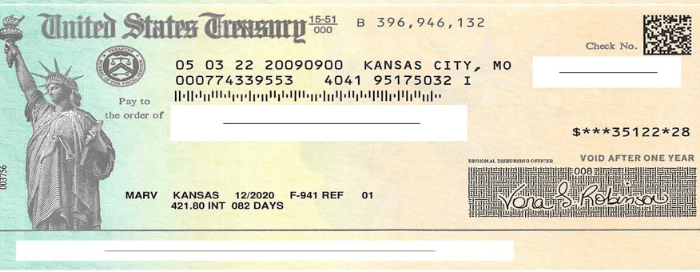
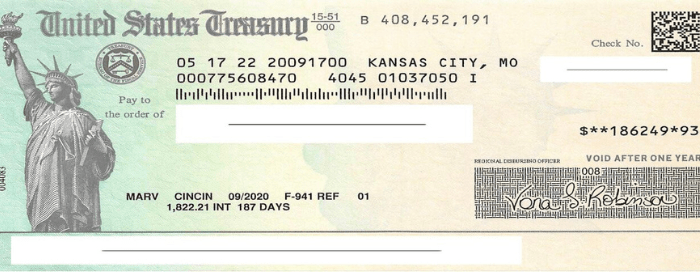
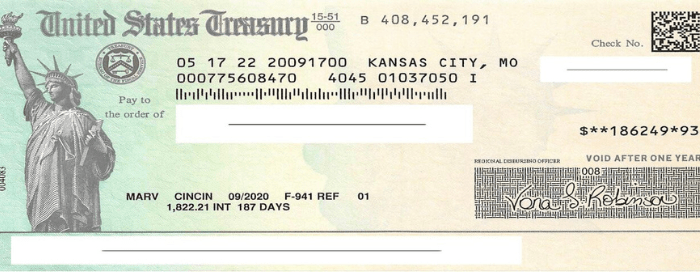
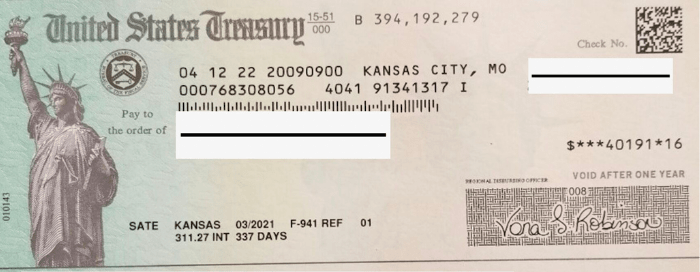
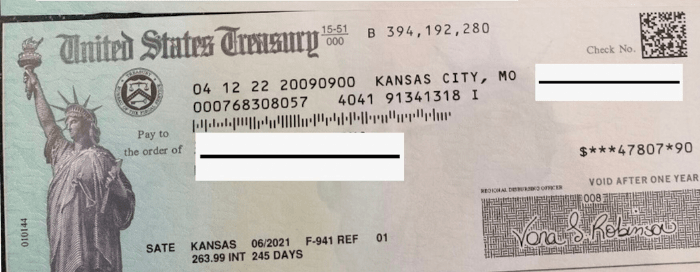
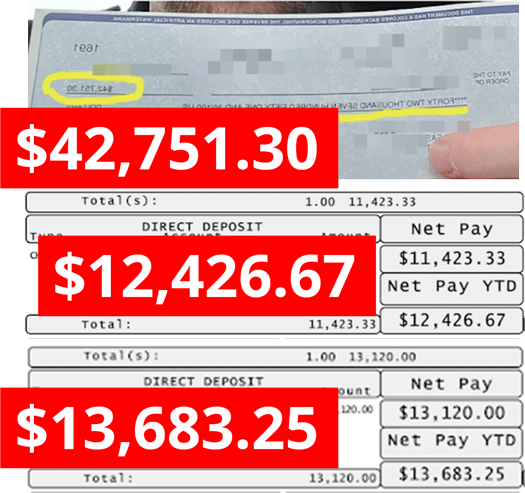


90% Approval Rating – But You Only
Have One Opportunity to Apply.
Ready to get your free funding estimate?
Get your free, no risk funding estimate today!


